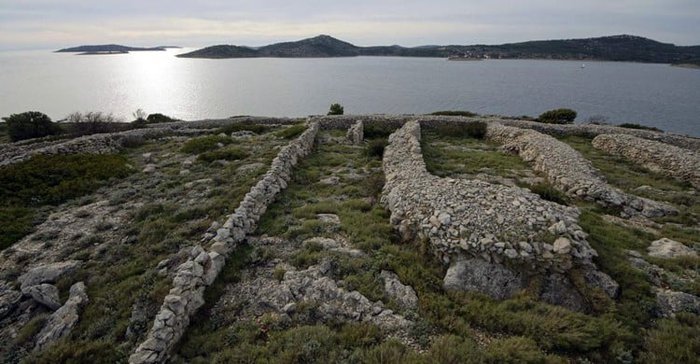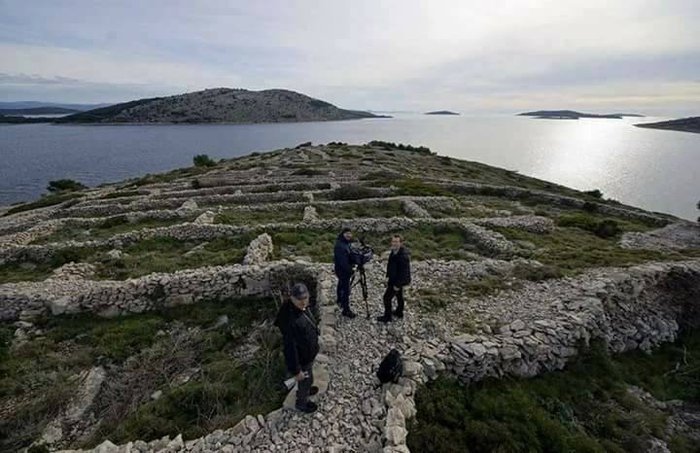
The oval-shaped island of Bavljenac is covered by a 23 km long network of dry stone walls.
The island’s rocky terrain and strong winds are not ideal for growing crops.
This is also a technique used in other parts of Europe, such as England or Ireland.
Bavljenac island impresses anyone who sees it for the first time because overall it looks like a giant fingerprint in the sea.
This uninhabited island has an area of only 0.14 square kilometers, but has 23 kilometers of walls created by stacking stones on top of each other.
The island has an oval shape, slightly distorted, with dry stone edges creating a difference.
Most of the stone wall network is believed to have been erected during the 19th century. Historically, both the islands of Bavljenac and Kaprije were safe havens for Christians during the Ottoman conquests

According to the Croatian National Tourist Board, farmers on the neighboring island of Kaprije once used Bavljenac for agricultural purposes.
Since aerial photos of this island began to spread on the internet.
These waist-high stone walls date back to the 1800s. Ancient people created them using a technique known as `dry stone walls`.
The Croatian government has asked UNESCO to include the island in the world heritage list.
In 2018, Bavljenac island was on the list of intangible cultural heritage recognized by Unesco.
According to the tourism board, the walls bear witness to a period of hard, persistent work that was the key to conquering the harsh but beautiful karst landscape of the Adriatic coast.
Bavljenac is a sun-drenched island dotted with vineyards and groves of fragrant fruits like figs and citrus.
Tourists visiting Bavljenac can take a boat trip around the island.
Bavljenac’s nearest center is Sibenik, a historic city in central Dalmatia. Bavljenac is one of 249 islands in the Sibenik archipelago.








